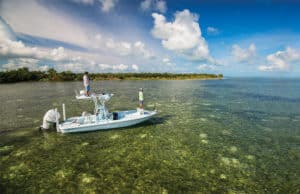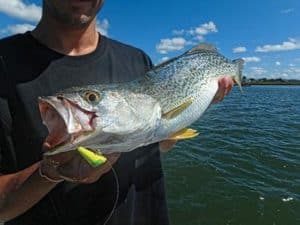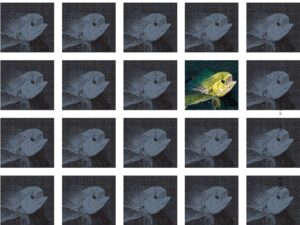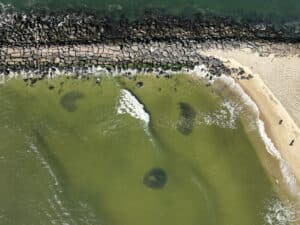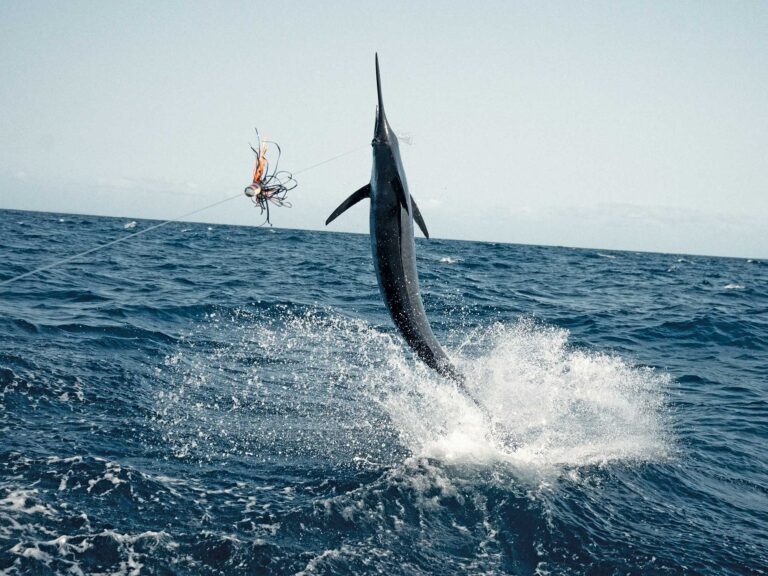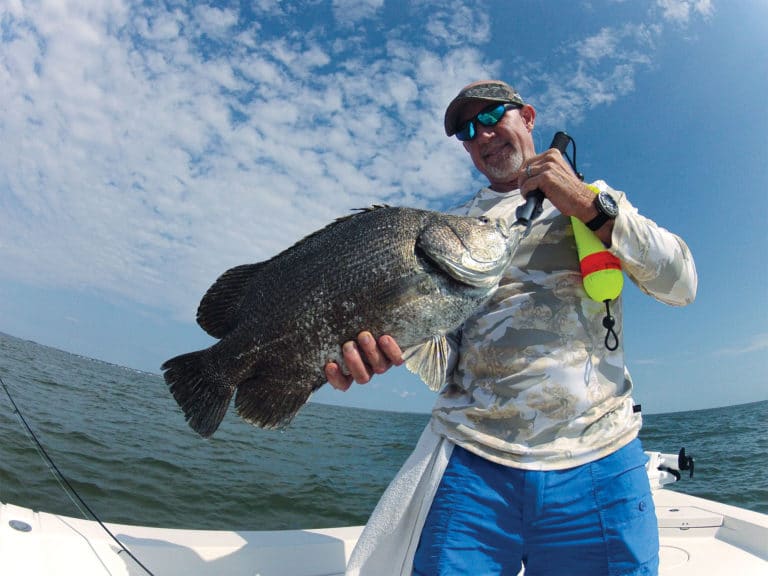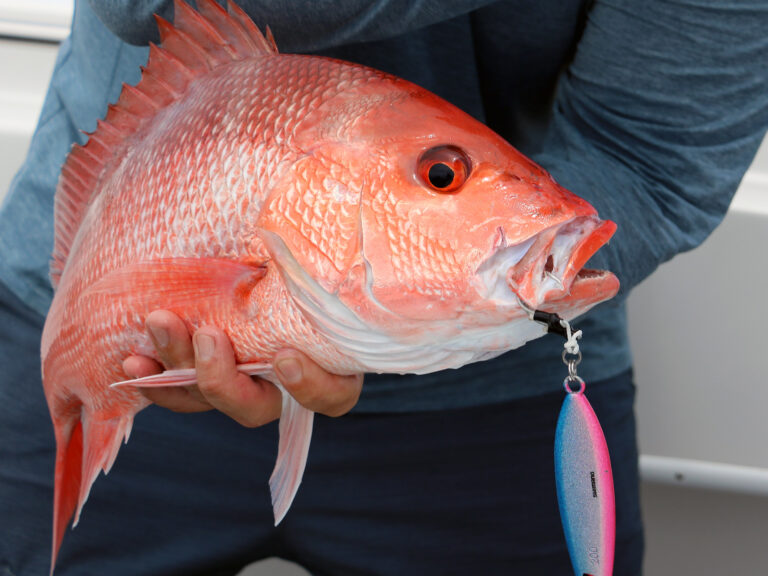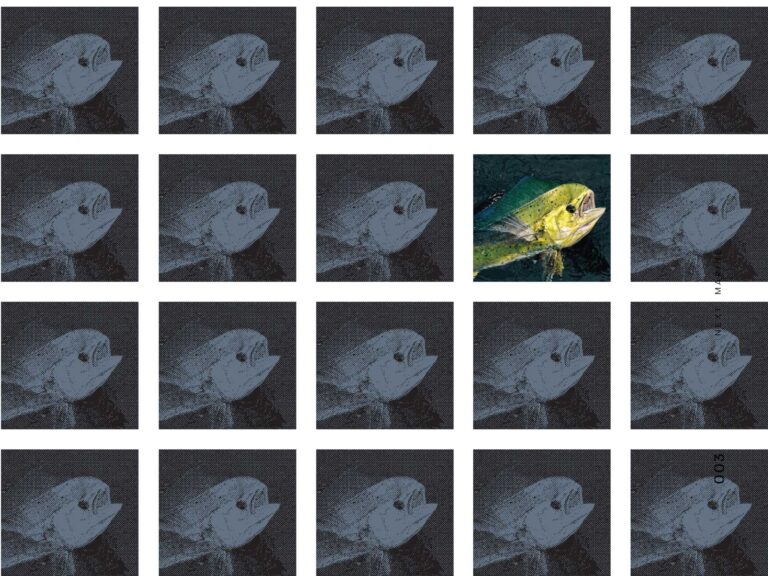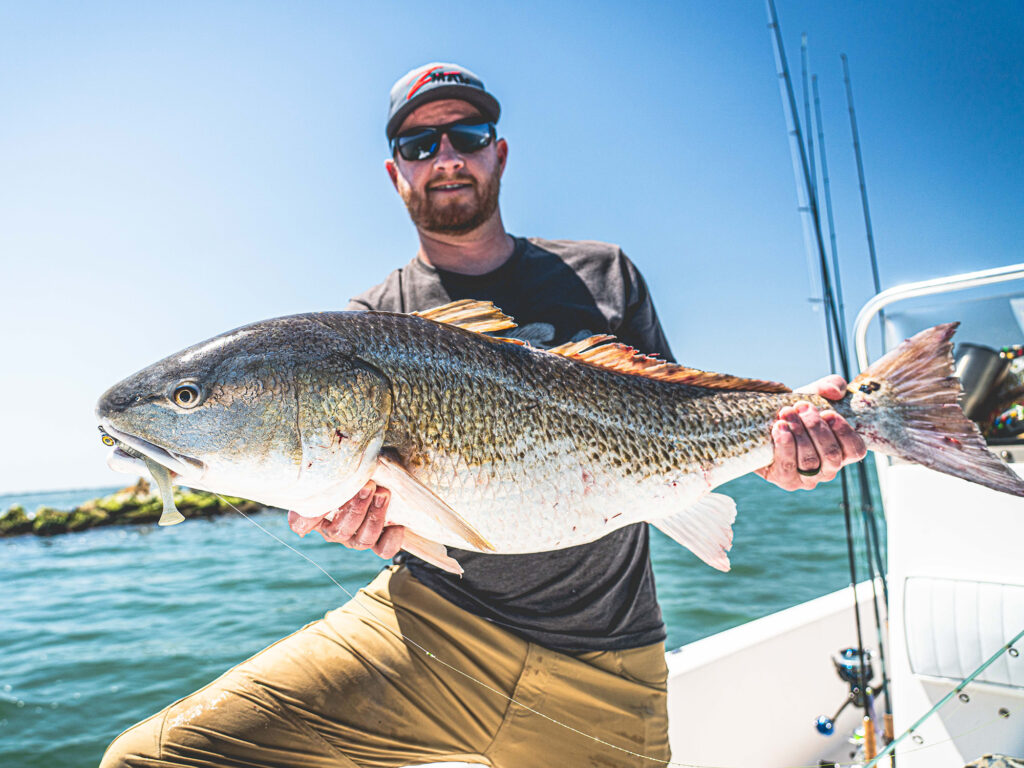
Redfishing Outside the Surf
We made the 20-minute run north to Bull’s Bay, appropriately named since I had hopes of hooking some of the big bull reds that move in there each fall. “October is the month for the biggest reds of all,” says Capt. Chance Smith, as he anchors up the 18-foot Shipoke flats skiff in the wind-blown chop. Smith says he’s caught them right at this spot to around 50 pounds.
Big spot-tails, as reds are known in this area, roam the coast spring and fall. They can be caught just off the surf line, where another Charleston guide, Rich Moore, likes to pursue them on calm days. “We’ll fish just outside the breaker line with blue crabs,” he says, adding, “I’ve done three or four of those 25- to 30-pound fish in a day.” Moore explains: “schools of large seatrout, some 5 to 6 pounds,” sometimes provide good action outside the surf while anglers wait for the bull reds to show up.
Right out of Charleston Harbor, at a spot called the Dynamite Hole, bulls of 20 to 45 pounds can be taken spring through fall. But it’s a tricky spot, and you have to be in exactly the right place to score. He told me the evening before that the main fall run of big reds hadn’t moved in yet, so fishing the Dynamite Hole would be an iffy proposition — but one still worth a shot. Unfortunately, with little activity evident in the bay and its waters growing choppier, Smith took us in to fish more reliable areas for smaller reds.
Just a short run from the harbor where we launched that morning, we stopped to work the edge of a main channel, casting to within inches of the thick spartina grass (tall sawgrass) that rimmed the deeper water. In the rising tide, redfish fed along these edges. Except for an occasional wake, we couldn’t really spot the 4- to 10-pounders, but they were there, right where Smith had pegged them.
Sight Casting to Huge Schools
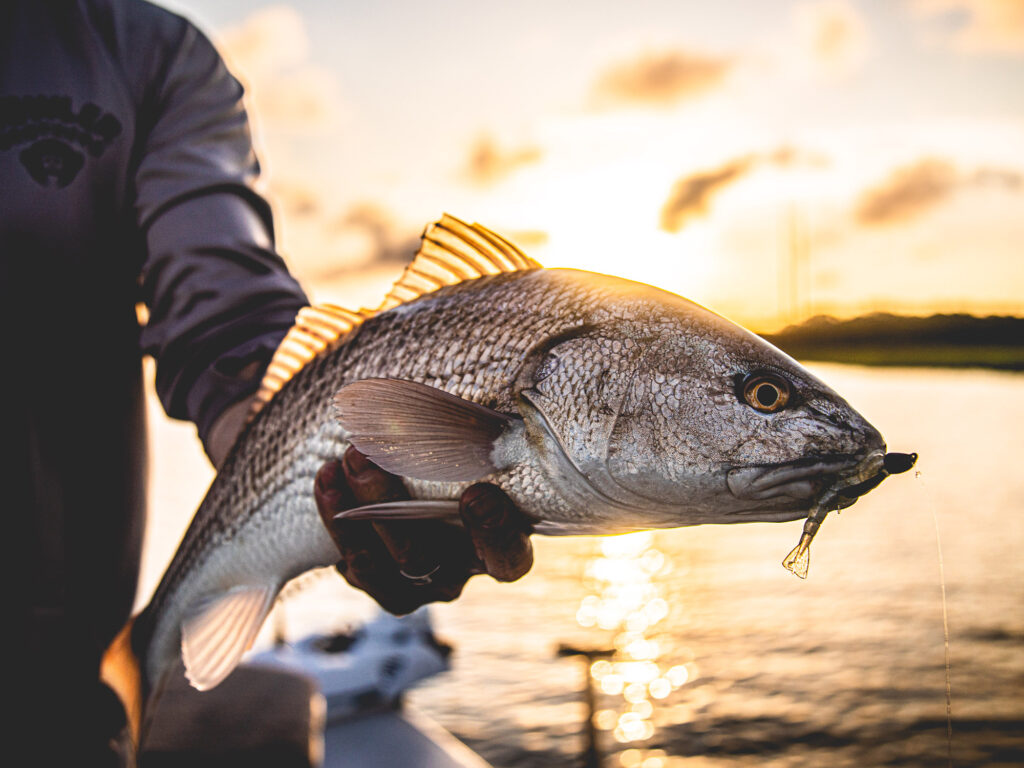
Sight casting plays an increasingly important role as winter weather cools. “The water is much clearer so we can see schools and even pick out individual fish,” says Smith. In fact, in the cold, clear water, “redfish will form schools and really gang up; it’s not uncommon to see a school of 300 to 400 fish.”
By November and December, 20- to 24-inch “pups,” as Smith calls little reds, are so thick that “when I get the weather, I can catch and release 50 to 60 a day without much problem.” If that sounds like exaggeration, note that Smith’s best day so far totaled 80 fish.
That great sight fishing continues into March, according to Moore. “The reds school up on mud flats back in the oyster beds in just a foot or a foot-and-a-half of water,” he adds. Moore encourages catching and releasing and prefers to catch just a few fish from a school, feeling that hooking too many from one group can stress the school — “and make them spookier the next day.”
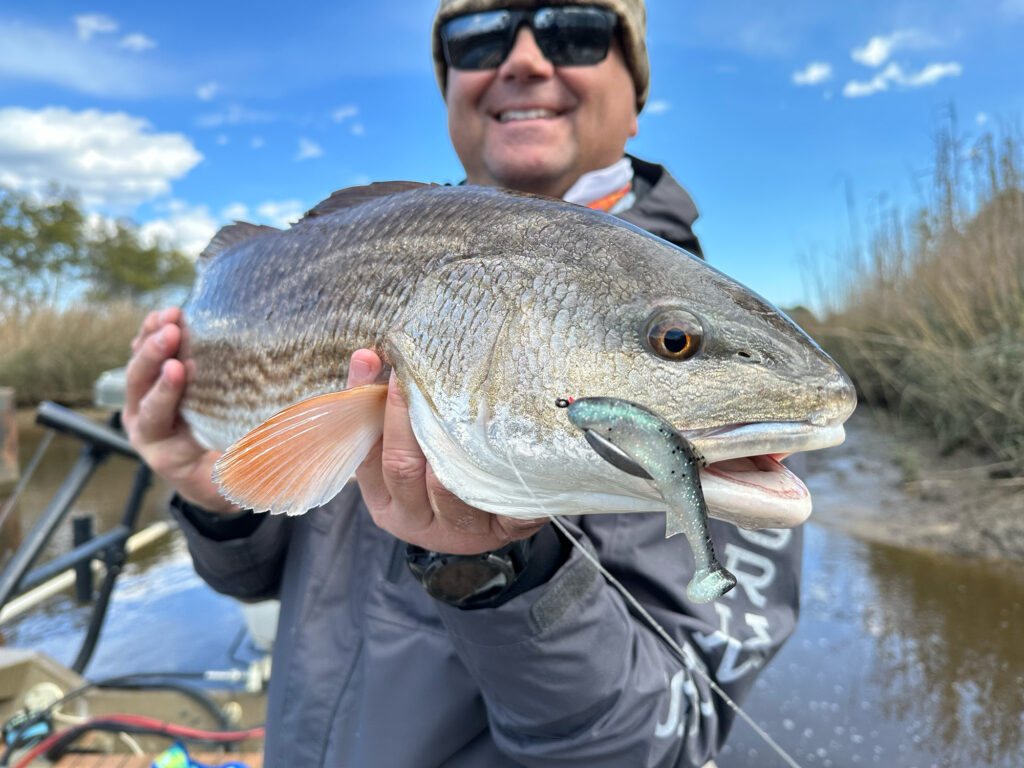
But his approach poses little difficulty since most winter days it’s not a problem to find many such schools of reds often averaging 27 to 30 inches. He calls this “a vast fishery,” noting that there are a great many bays and many flats in the vicinity.
There’s a caveat to winter fishing, however: “When the water drops below 50 degrees, it’s hard to get ’em to feed,” he recalls. “I remember a two-week period it was below 50 degrees and you could see the fish but they just wouldn’t bite.” Fortunately, it gets that chilly only for short periods during the heart of winter months.
Fly Fishing for Redfish
Fly fishermen — who now make up about three-fourths of Smith’s clients in winter and about a third during the summer — take advantage of these huge schools. Getting close to the targets becomes essential, since the fish, more lethargic in feeding, like to have the fly dropped right in front of them. Figure on making casts of at least 40 to 50 feet.
Any lethargy, however, ends abruptly enough once these cold-water reds feel a hook. “If someone tells you a redfish doesn’t fight in the winter, I can tell them different,” Smith says. “I had one guy tell me that — and the next thing you knew, he was into his backing on a 15-pounder!”
An 8- or 9-weight rod is about right, particularly to deal with the frequent breeze, “But on a really calm day, a good fly rodder can sneak down to a 6-weight,” Smith says. Clouser minnows and Bendbacks are popular, particularly in gold patterns.
Springtime in South Carolina: Reds, Jacks and Silver Kings
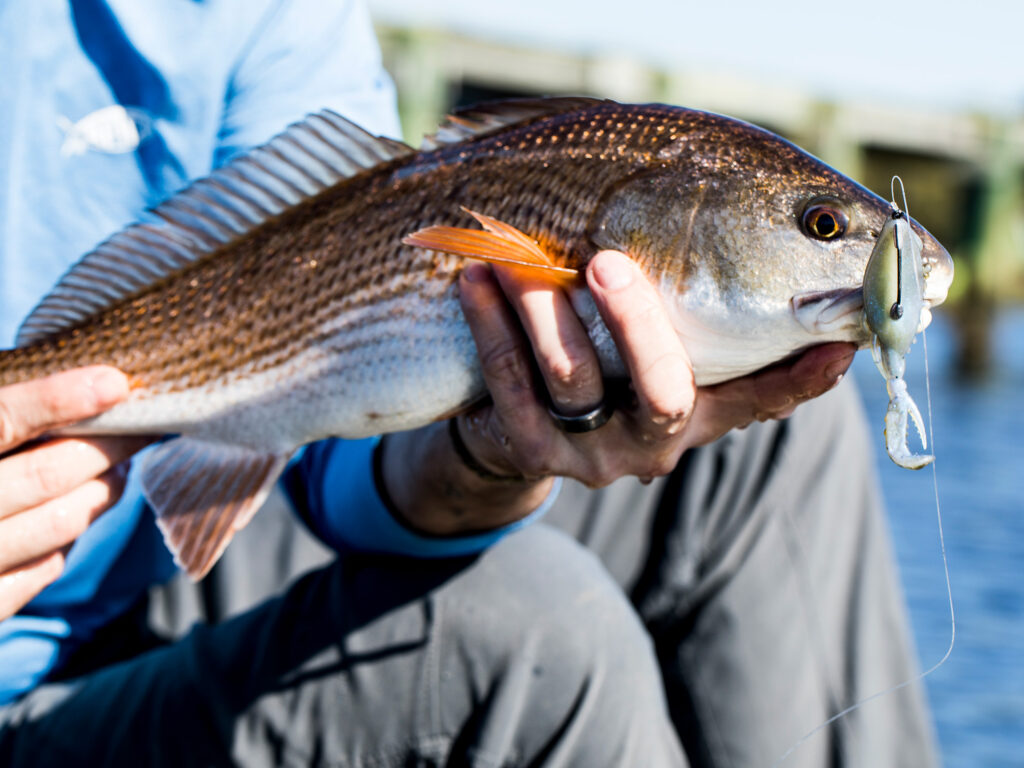
The spring months herald warming water, and that means increasingly aggressive redfish in shallow waters. “Then, bigger reds are moving in from offshore back into the surf and some in Bull’s Bay, much like in the fall,” Smith says. It’s also a good time to find any of several other species of inshore gamefish in the same waters, including seatrout, flounder and some big ladyfish.
By late spring, jack crevalle as large as 40 pounds, great targets for anglers wanting a real workout, move into the harbor. Shortly after that, tarpon show up as well and, while there’s not as much of a directed fishery here as around Hilton Head just to the south, fishermen do hook up some of the silver kings each year.
In fact, Moore said he targets tarpon during the summer in Bull’s Bay. It’s a fishery that’s picking up steam; guides like Moore report seeing more of the silver kings than ever. So far, it’s not a fishery that warrants booking many trips, but Lowcountry anglers take some good tarpon each summer.

